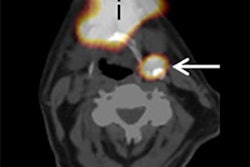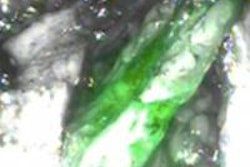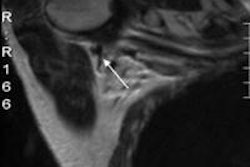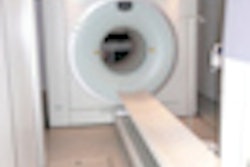Presurgical SPECT/CT provides more effective sentinel node imaging than lymphoscintigraphy, according to results from an international multicenter trial presented at the Society of Nuclear Medicine and Molecular Imaging (SNMMI) annual meeting.
SPECT/CT found significantly more sentinel lymph-node involvement, the researchers reported. This outcome remained over a range of cancers, including melanoma, breast carcinoma, and malignancies of the pelvis such as prostate and cervical cancer.
| No. of cancerous sentinel nodes detected | |||
| Cancer type | Planar lymphoscintigraphy | SPECT/CT | Improvement |
| Pelvic cancer | 138 | 195 | 29.2% |
| Breast cancer | 1,892 | 2,165 | 13% |
| Melanoma | 532 | 602 | 11.5% |
SPECT/CT also led to substantial changes in surgical planning due to the detection of additional sentinel nodes:
- 64.1% of pelvic cancer surgeries changed.
- 37% of melanoma surgeries changed.
- 16.9% of breast cancer surgeries changed.
The two imaging systems had a mismatch between sentinel nodes and lymphatic territories of 17% for breast cancer, 11.2% for melanoma, and 50% for pelvic imaging. The significantly higher mismatch in pelvic tumors may be due to relatively deeper lymphatic drainage and location of pelvic sentinel nodes, according to the researchers.
The study results could potentially inform new clinical practice and shape appropriate use of SPECT/CT imaging for patients selected for surgery, said co-author Dr. Thomas Pascual, of the International Atomic Energy Agency, in a statement.



















